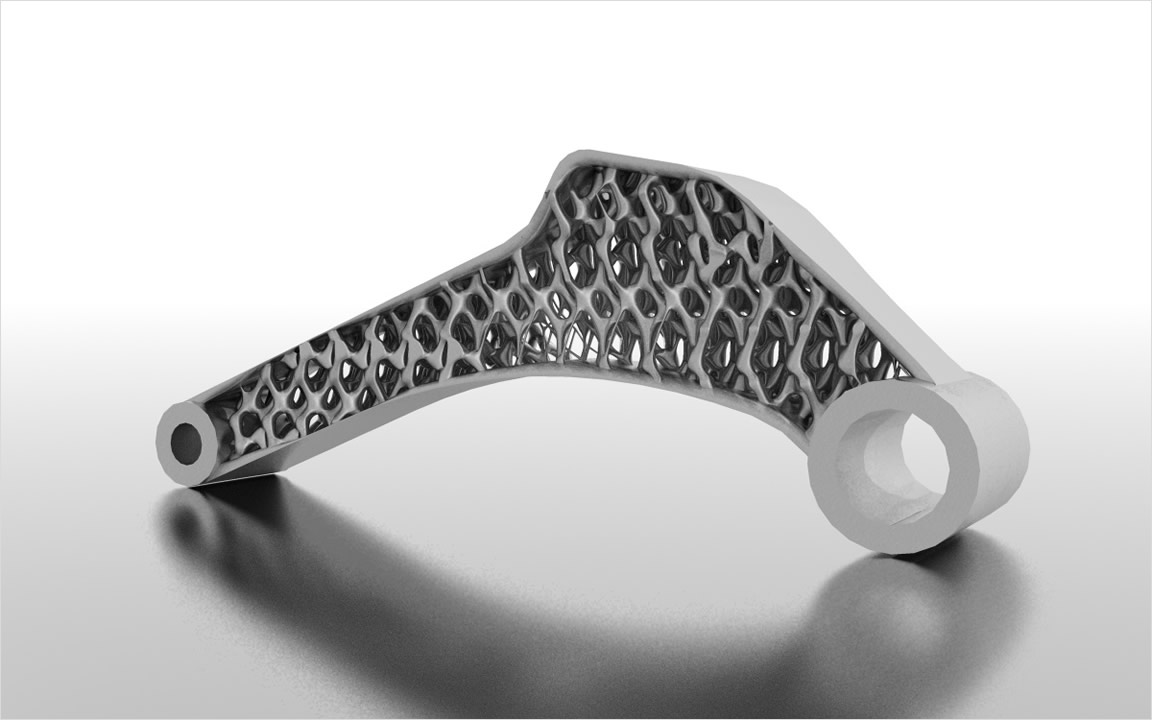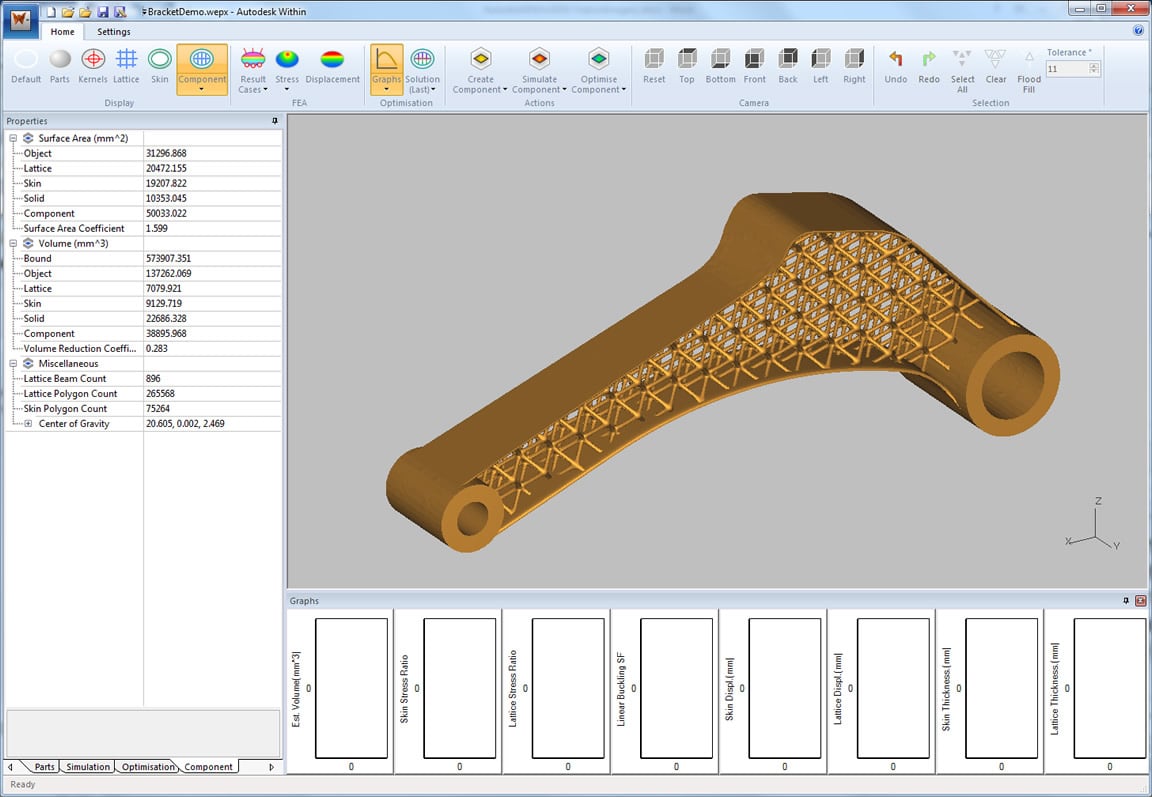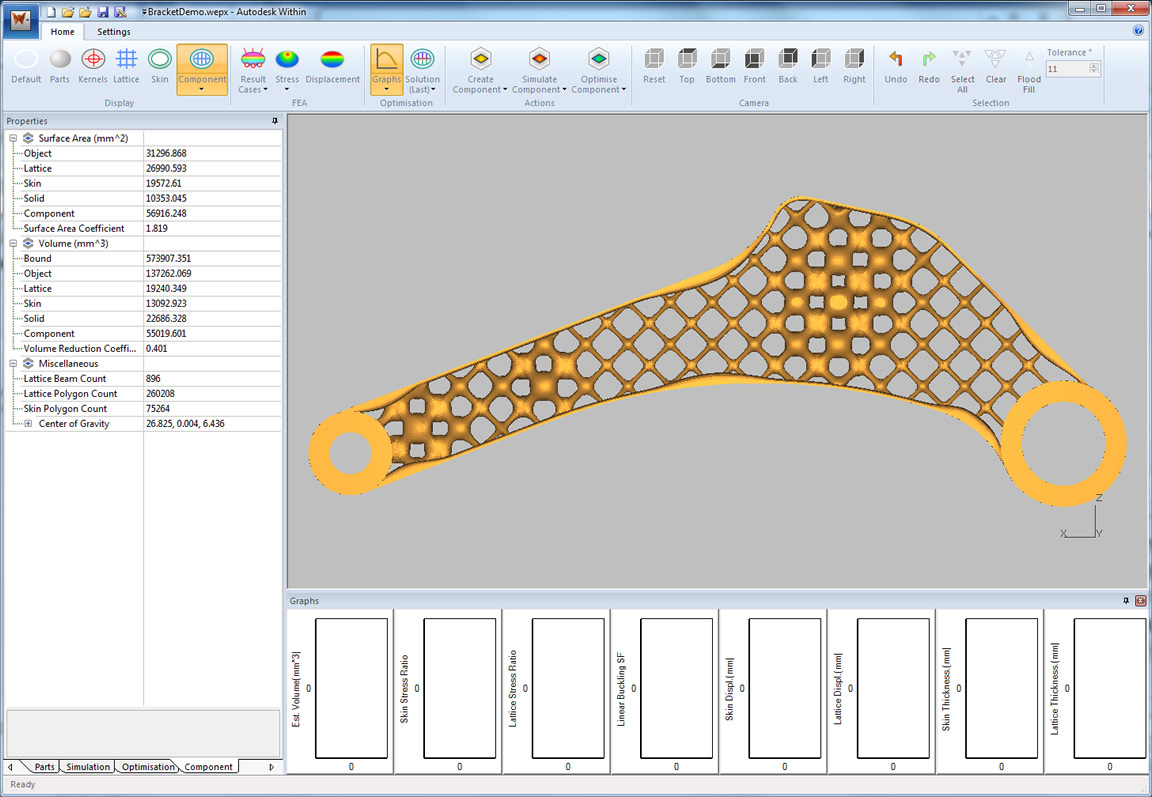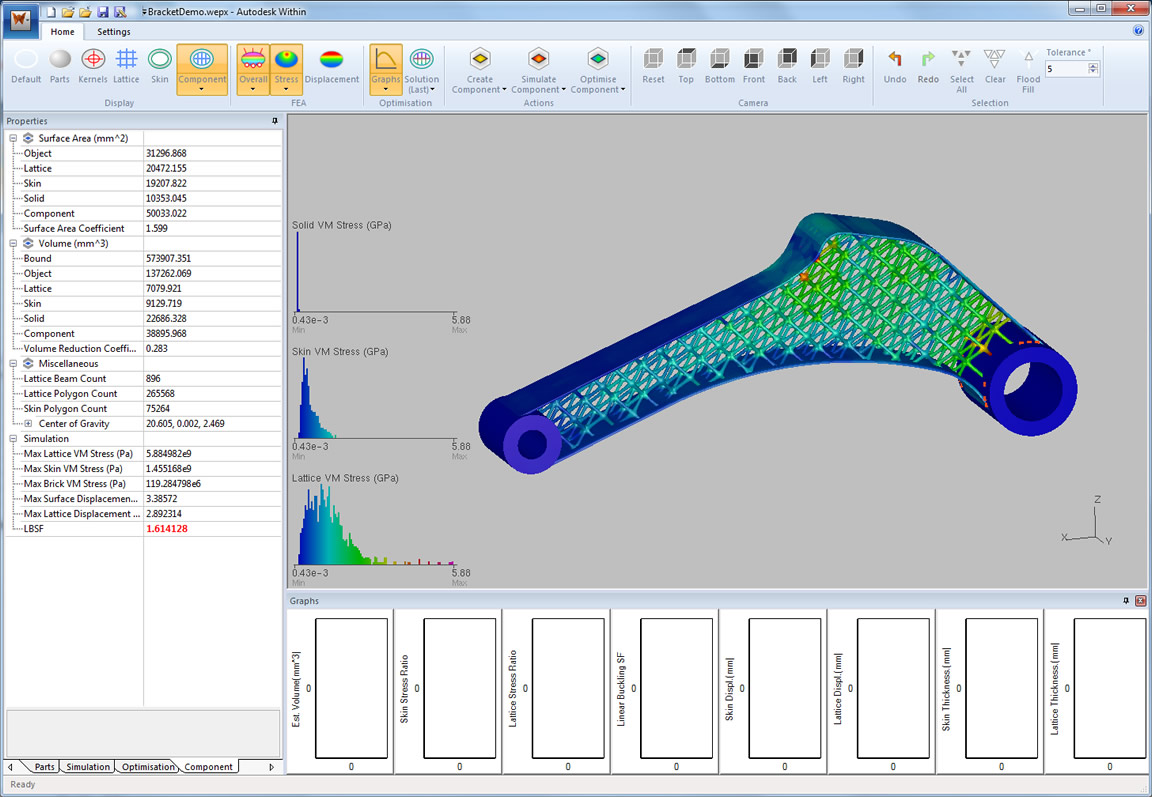Autodesk introduced a new product called, “Within” that generates lattice structures within 3D models. It could change everything.
The software accepts a 3D model and attempts to dynamically generate an internal structure that, when 3D printed, is far more lightweight than a solid structure. It accomplishes this by placing a number of equally spaced nodes and expanding connections between them. These connections can be thickened or thinned, depending on the need for strength.
The tool also includes methods to optimize the lattice solution by thickening a critical portion of the internal lattice, and also adjusting the object’s skin thickness to complement the strength provided by the generated internal lattice.
Once your design is completed, you can then test its strength with a design simulation, which attempts to show visually how stress works its way through the exterior and interior of the object.
We think this is a very profound feature that will soon be used whenever 3D printed parts are designed. The main advantage of 3D printing is to do things precisely like this: make lightweight, strong parts using complex internal structures that cannot be manufactured in any other way.
But because design tools almost always assume “solid” objects, many 3D printed parts are just that: solid. This means that the parts are strong, but they aren’t necessarily lighter than conventionally produced items. Worse, the solid prints use more material than those with internal lattices. This is a very important factor during metal 3D printing, where the cost of metal powders can be exorbitant.
It may be that this feature, when combined with metal 3D printing, could enable the financial viability of printing more production 3D metal parts. If it’s cheaper to design and produce them, then more will appear. And this could lead to increased sales of 3D metal printers.
One feature we hope Within includes: an ability to insert a “drain hole” to pull unused powder from the interior of the print. If no such feature exists, then the print may as well be solid, as the metal powder would be trapped inside anyway!
Via Autodesk





